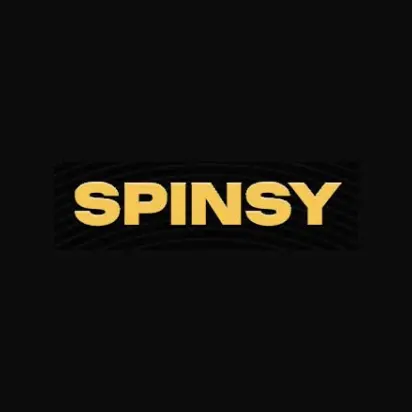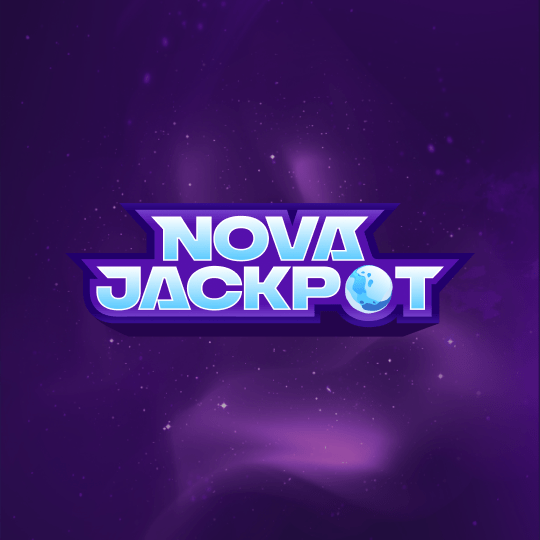Top Australian Online Casino Sites (May 2025)
Choose your real money casino below. Trusted, safe, secure. Topio Networks Casinos.

UP TO AU$20,000 + 500 FS
- Best Online Casino in Australia
- Recommended Online Pokies
- Real Money Online Casino

Up to AU$4.500 + 300 FS
- Lightning-Fast Payouts
- Top online casino Australia
- Aussies’ Top Pick for Gaming

up to 10.000 AUD + 500 free spins
- New Casino Online Australia
- Blazing fast payments
- Real money online casino

100% UP TO $10,000 + 100 FREE SPINS
- Top Casino Online 2025
- Great bonuses
- Best Pokies Online
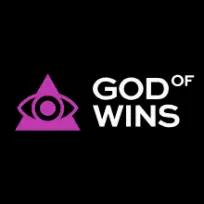
450% up to AUD $5,500 + 500 Free Spins
- Free spins bonuses
- Online pokies
- 24/7 Aussie customer support

up to A$8,000 + 400 Free Spins
- Popular Australian Casino Online
- The best online pokies
- Quick cashouts 24/7

250% up to $3,000 + 350 FS
- AUD real money casino online
- VIP Aussie casino
- Quick cashouts

225% up to AUS1000 + 275 FS
- New online casino Australia
- Heaps good real money games
- Fast payments & secure
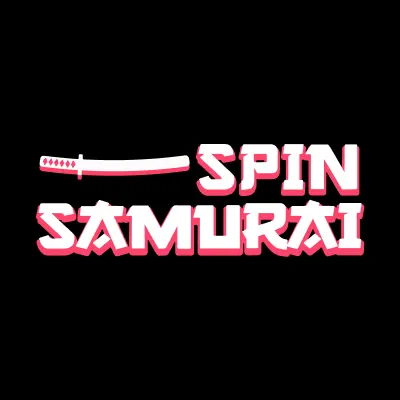
275% Up to AU$5,000 + 150 FREE SPINS
- Secure online pokies
- Great for Aussies
- Heaps good real money games

$1,000 in Deposit Bonuses + 200 Free Spins to all new players
- Great Australian Casino Online
- All the best pokies
- Lots of bonuses

AUD$1200 + 300 FS in 4 bonuses
- Great choice for Aussies
- Real money online casino
- Best casino bonuses
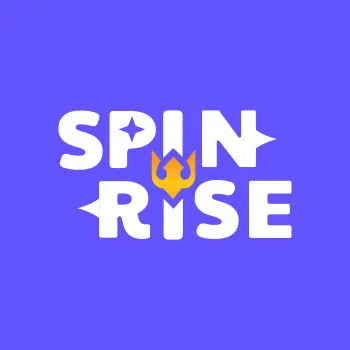
Welcome Pack Up to $5,555 + 243 Free Spins
- Best new online casino Australia
- Best live dealer games
- All popular pokies

250% up to 2500AUD + 250FS
- Top Online Pokies for Aussies
- Exclusive VIP Australian Casino Offers
- Massive Casino Bonuses You Can’t Miss

50 Free SpiNs + 330% Bonus
- Heaps good online casino
- Excellent promotions
- Great online pokies
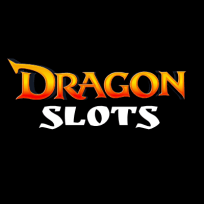
225% up to 2250AUD + 200FS
- Top choice for Aussie players
- Secure and fast payments
- Popular online casino games

Welcome bonus 450% up to $6000 + 325 fs on first 4 deposits
- New Aussie Casino
- Huge casino bonuses
- Popular casinogames

300% bonus + 150 FS up to A$4000
- Top choice 2025
- Great game selection
- Secure Online Casino
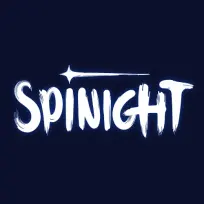
500AUD + 200 Free Spins
- New online casino Australia
- Best pokies
- Quick transactions & secure
About best online casinos Australia
| Secure & recommended online casinos in Australia | 10+ |
| Online pokies | 4000+ |
| Online roulette | Yes |
| Online blackjack | Yes |
| Online poker | Yes |
| No deposit bonuses | Yes |
| Deposit bonuses | Over $20.000 |
| Free spins without deposit | 25 Free spins |
| Free spins on deposit | +2000 |
| Banking options | Skrill, Visa, Mastercard, Paysafe Card, Direct wire transfers, Neosurf, |
| Responsible gambling | Yes |
| Accepts players från Australia | Yes |
Best Online Casinos in Australia: A Comprehensive Guide for 2025
Australia has long been a hub for gambling enthusiasts, and the digital era has only expanded this passion into the online space. With a plethora of online casinos available to Australian players, choosing the best ones can be a daunting task. This guide will help you navigate the options by highlighting the best online casinos in Australia for 2025, based on factors such as game variety, security, bonuses, and customer service.
Online Casino Australia Sites for Real Money 2025
Looking for the best online casino Australia sites? Discover a few games that are particularly enjoyable at these online casinos. Each au online casino offers unique promotions, game variety, and user experiences tailored for Australian players. We cover the top real money online casino sites, legal tips, and where to spin the hottest online pokies. Check out the best casinos for Aussie players and pick your next real money casino. Trusted, safe, and built for fair dinkum fun. Topio Networks Australian Casinos.
The Good Stuff – Why Aussies Love Online Casinos
Most of these online casinos are made with Aussie players in mind. You can chuck in your dollars using Australian dollars (AUD), pay with stuff like Neosurf or even crypto, and they’ll often throw in a bonus that’ll make your jaw drop. It’s smooth sailing from sign-up to cash out.
Heaps of Pokies & Games
We’re talkin’ thousands of games – from the old-school one-armed bandits to flashy new video pokies, blackjack, roulette, and even live dealers if you’re keen for a more Vegas vibe. Australian online casinos offer a diverse selection of games and various incentives, ensuring you’ll never run out of stuff to spin or shuffle.
Welcome Bonuses That Slap
First-time player? Mate, you’re in for a treat. Most casinos hand out massive bonuses – some up to AU$20,000 plus hundreds of free spins. VIP players can also enjoy exclusive perks like birthday bonuses, enhancing their overall gaming experience. Even no deposit spins just for signing up. It’s like walking into the pub and getting a free round.
Fast Payouts – No Waiting Around
No one likes waiting to get paid, right? The best Aussie online casinos offer fast payouts and a variety of banking options, shooting your winnings back quicker than a roo on the run – sometimes in under an hour if you use the right method.
Safe As Houses
The best Australian casinos are properly licensed and run with bank-level security, ensuring they are safe and secure for players. They use encryption tech so your info doesn’t end up in the wrong hands, and the games are regularly tested to make sure you’re not getting stitched up.
Banking Options Galore
Online casinos cater to specific player needs and preferences by offering a variety of banking options. From your trusty Visa or Mastercard to e-wallets and even Bitcoin, there’s a way to get your cash in and out. Aussie-friendly methods like POLi and Neosurf are common too – easy as.
Smooth on Mobile
Love a flutter on the go? These mobile casinos are built for phones and tablets, offering an enhanced gameplay experience with touch-friendly interfaces. Whether you’re on the train or the couch, everything plays like a dream.
Responsible Online Gambling Tools
If you’re worried about going overboard, most sites have tools to help you stay in control – like setting limits or taking a breather. And if things get a bit rough, you’ve got Online Gambling Help just a click away.
The Not-So-Great Bits – What You Should Watch Out For
Legal Grey Zone
Here’s the thing – Aussie law says casinos can’t operate from here, but they can accept us from offshore. Bit of a legal limbo. So while it’s not illegal to play, don’t expect local authorities to back you up if anything goes south.
Tricky Bonus Rules
Those massive welcome deals? They sound ace, but there’s usually a catch – like 30x or even 60x wagering requirements. That means you’ve gotta play through your bonus heaps before you can cash out.
No Aussie Consumer Protection
Because the sites are offshore, our usual consumer laws don’t apply. If something feels dodgy, you’ll be dealing with a support team overseas, not a local ombudsman.
Bank Blockages
Some banks still block gambling payments. It’s a bit hit-and-miss. So you might need to get comfy using Neosurf, crypto or e-wallets to get around it.
Some Games Might Be Blocked
Ever open a slot and it just won’t load? Yep – that’s geo-blocking. Some games just aren’t available in Oz due to licensing. Not the end of the world, but a bit annoying.
First Withdrawal Might Take a Bit
First time cashing out? Be ready for KYC – they’ll want ID, proof of address, maybe even a selfie. It’s a pain, but it’s standard these days and only really drags things out the first time.
Confusion Around Tax
In Australia, your online gambling winnings are tax-free – ripper! But if you’re cashing out big through crypto or overseas accounts, keep things squeaky clean in case the ATO comes sniffin’ around.
What to Look for in Best Online Casinos in Australia
Before getting started with online pokies, it's essential to understand what makes an online casino stand out:
- Licensing and Regulation: Ensure the casino is licensed by a reputable regulatory body, such as the Malta Gaming Authority or the UK Gambling Commission. In Australia, while online casinos themselves cannot be based within the country, they can operate legally from offshore locations.
- Game Selection: A good online casino should offer a wide range of games, including slots, table games like blackjack and roulette, and live dealer options.
- Bonuses and Promotions: Look for casinos that offer generous welcome bonuses, ongoing promotions, and loyalty programs.
- Payment Methods: The best casinos offer a variety of payment options, including credit/debit cards, e-wallets like PayPal, and cryptocurrencies.
- Customer Support: Reliable customer support is crucial. Look for casinos that offer 24/7 support through live chat, email, and phone.
- Security and Fair Play: The casino should use SSL encryption to protect your data and ensure that games are fair through regular audits by independent bodies.
Security is a top priority for any reputable online casino. Make sure the casino uses SSL encryption to protect your sensitive data and displays clear licensing information to ensure it operates legally and fairly. Independent audits by third-party organizations can also validate the fairness and security of the casino.
Game variety is another essential factor. The best online casinos offer a wide array of games, including pokies, table games, and live dealer games, ensuring there’s something for everyone. Additionally, consider the bonus offers available, such as welcome bonuses, free spins, and loyalty rewards, which can significantly enhance your gaming budget.
Getting Started at an Australian Online Casino
Signing up and diving into the world of online casinos in Australia is easier than you think—but there are a few important steps to follow to ensure a safe and seamless experience. Here's how to get started the right way:
Step 1: Choose a Trusted Australian Online Casino
Start by picking one of the best Australian online casinos that:
- Accepts AUD and supports local payment methods
- Offers secure licensing (like Curacao or MGA)
- Has strong game variety and bonus offers
- Provides 24/7 customer support
Top picks like Vegas Now, Lucky Ones, Lukki, Just Casino, and Let’s Lucky are great places to start, offering everything from pokies to live dealer tables and generous welcome bonuses.
Step 2: Sign Up and Create Your Account
Click the ‘Sign Up’ or ‘Register’ button on the casino homepage. You’ll need to fill in:
- Full name (as per your ID)
- Email address
- Date of birth (you must be 18+)
- Residential address
- Mobile number
- A strong, unique password for account security
Use real and accurate details to avoid delays during verification.
Step 3: Verify Your Identity (KYC)
All licensed online casinos in Australia require you to complete KYC (Know Your Customer) verification. This step ensures you are who you say you are and helps protect against fraud, underage gambling, and money laundering.
To verify your account, you’ll be asked to provide:
- Photo ID – Driver’s licence, passport, or government-issued ID
- Proof of address – Recent utility bill, bank statement, or rental agreement
- Email or SMS confirmation – To validate your contact info
This is usually a one-time step and is required before your first withdrawal.
Step 4: Make a Deposit and Claim Your Bonus
Once verified, head to the cashier section to make your first deposit. Most Aussie-friendly casinos accept:
- Visa / MasterCard
- POLi / PayID / Osko
- E-wallets like Skrill, Neteller, PayPal
- Crypto like Bitcoin, Ethereum
- Neosurf or bank transfers
Minimum deposits are usually around A$20–A$30, and this will unlock your welcome bonus—often matched with free spins and bonus cash. Don’t forget to read the terms and conditions, especially the wagering requirements.
Step 5: Explore and Play
Choose from:
- Pokies (including progressive jackpots)
- Table games like blackjack, roulette, and baccarat
- Live dealer tables for real-time action
Most casinos are mobile-friendly too, so you can play from your phone or tablet just as easily as on desktop.
Pro Tip: Play Smart & Stay Safe
Before you get stuck in, take advantage of responsible gambling tools:
- Set deposit or loss limits
- Activate session time reminders
- Use cool-off periods if needed
All good online casinos in Australia offer these features to help you stay in control and keep gaming fun.
You're All Set!
That’s it—you’re now ready to enjoy everything an Australian online casino has to offer. From big bonuses and top pokies to strong support and secure banking, your gaming journey starts here. Just remember to play responsibly, have fun, and may the odds be ever in your favour!
Online Pokies Australia: What Every Aussie Player Should Know
Pokies – that’s our lingo for online slots Australia style – are the heart and soul of every Aussie-friendly online casino. Whether you're a laid-back Sunday spinner or chasing feature buys like a pro, these games come in all types: classic 3-reelers, 5-reel video pokies, and turbo-charged megaways with thousands of ways to win.
From jungle-themed reels to outback adventures, online pokies today are more than just luck – they’re entertainment with a jackpot twist.
Online Pokies for Real Money - Only for Aussies
If you’re not just mucking around and want a proper punt, an online Australian casino is the perfect platform for real money gambling. Licensed Aussie-facing casinos accept AUD, offer quick withdrawals, and serve up bonuses like they’re going out of fashion.
Some top-tier picks?
- Aussie Play – Great welcome package and exclusive pokies
- Neon Reels Casino – Lightning-fast payouts with real money slots
- Red Stag – A hit for classic-style pokies fans
Pokie Features Aussies Go Bananas For
Aussies love pokies packed with features – here’s what players are always chasing:
- Free Spins Galore – Land 3 scatters and it’s game on. Think Book of Dead or Big Bass Bonanza.
- Progressive Jackpots – Eye-popping wins from titles like Mega Moolah, Wheel of Wishes or King Cashalot.
- High RTP Machines – Legends like Starburst, Gonzo’s Quest or Blood Suckers pay back well – up to 98% RTP on some.
- Bonus Buys – If you’re not one to wait, games like Money Train 2 or Sugar Rush let you buy straight into the action.
Popular Slot Themes Aussies Crave
You’ll find no shortage of themed online pokies – from footy legends to ancient pharaohs, here are themes that hit home with Aussie spinners:
- Outback Adventures – Boomerang Bonanza, Kanga Cash Extra
- Rock & Roll Reels – Guns N’ Roses, Jimi Hendrix, Ozzy Osbourne
- Asian-Themed Slots – 88 Fortunes, Dragon’s Luck, Caishen’s Gold
- Horror & Halloween Vibes – Immortal Romance, Halloween Jack
- Sci-Fi & Futuristic – Reactoonz, Starburst XXXtreme, Space Wars 2
Where to Find the Best Online Slots in Australia
We’ve sussed out the top online casinos offering massive pokie libraries, mobile play, and proper Aussie vibes:
- Vegas Now – Best for bonus-heavy pokies
- LuckyDreams – Killer mobile app with clean UI
- Golden Crown – Weekly pokies races and classic Aussie themes
- SkyCrown – Pokies from over 100+ providers including Pragmatic, NetEnt & BTG
Pro Tips for Winning at Aussie Pokies
- Check the RTP – Higher the better, mate
- Claim No Deposit Free Spins – Great way to test the waters
- Stick to a Budget – Don't punt more than you can handle
- Understand Wagering Terms – Avoid pokies with crazy-high playthrough
Mobile Online Slots – Spin Anywhere
No one’s glued to a desktop these days. Aussie online casinos are built for mobile-first fun. Whether you’re riding the train, having a stubby on the veranda, or out bush, just fire up your mobile and spin away.
Other Popular Real Money Casino Games Aussies Love
When it comes to online casino games ap, Aussie players are spoiled for choice with a variety of gaming options, including other casino games. From classic table games to fresh crash-style hits, there’s heaps of action at your fingertips.
Live Dealer Games
Missing that casino vibe? Live dealer games bring the buzz of a real casino right to your screen. Chat with real dealers while playing blackjack, roulette, or baccarat—all streamed in crystal-clear HD.
Table Game Classics
Fancy some strategy? Blackjack and baccarat are fan favourites thanks to their low house edge and simple gameplay. Perfect if you're keen on stretching your bankroll with a bit of skill.
Crash & Specialty Games
For something different, try new-age hits like Aviator, Plinko XY, or Crash Fisher. These crash games are innovative, fast-paced options that enhance the gaming experience with the chance for sky-high wins.
Understanding Casino Bonuses in Australia
Casino online bonuses are a ripper way to kickstart your online gaming. Whether you’re a fresh face or a seasoned punter, bonuses help stretch your bankroll and keep the fun rolling. Here’s a quick rundown of the big ones Aussie players should keep an eye out for.
Welcome Bonuses
To get started and play online casino games, these beauties match your first deposit, often up to a few grand plus free spins. Some go as high as 330%—that’s a big boost to start your Australian casino online journey. Usually, you’ll only need around A$30 to get in the game.
No Deposit Bonuses
Don’t wanna drop cash just yet? No deposit bonuses let you have a crack at games just for signing up—no strings (well, except some wagering rules). Great way to try before you buy!
Cashback Offers
Had a rough trot? Cashback deals give you a slice of your losses back over the week. Perfect for regular players chasing a bit of insurance on their bets.
Deposit Bonuses
One of the most attractive features of online casinos is the deposit bonus. A deposit bonus is a promotional offer that matches a player’s initial deposit with a certain amount of bonus money. For example, a 100% deposit bonus up to $100 means that if a player deposits $100, they will receive an additional $100 in bonus money, giving them a total of $200 to play with. Deposit bonuses are a great way for players to boost their bankroll and increase their chances of winning. Many online casinos in Australia offer generous deposit bonuses, including welcome bonuses, reload bonuses, and VIP rewards.
Game Providers
Game providers are the companies that develop and supply online casino games to operators. Some of the most well-known game providers in the industry include NetEnt, Microgaming, and Playtech. These companies create a wide range of games, including online pokies, table games, and live dealer games. When choosing an online casino, it’s essential to consider the game providers they work with, as this can impact the quality and variety of games available. In Australia, many online casinos partner with multiple game providers to offer a diverse range of games to their players. By understanding the different game providers and their offerings, players can make informed decisions about which online casinos to play at and which games to play.
Payment Options at Australian Gambling Sites
Aussie online gambling sites make banking a breeze with a solid mix of safe and speedy options. Whether you're cashing in or cashing out, you’ve got plenty of choices to suit your style.
Popular Deposit & Withdrawal Methods
- Credit/Debit Cards – Visa, MasterCard
- E-Wallets – Skrill, Neteller, PayPal
- Prepaid Cards – Neosurf, Paysafecard
- Bank Transfers – Secure but slower
- Cryptos – Bitcoin, Ethereum, Litecoin for anonymous, fast payments
- Instant Banking Services – POLi, PayID, Osko (great for locals)
When it comes to the variety of banking options available, Australian online casinos offer a wide range of methods to suit every player's needs.
Security & Speed
E-wallets and crypto lead the way for fast payouts, often same-day. Cards and bank transfers take longer due to KYC checks and processing delays. Stick to licensed casinos with SSL encryption for a smooth and secure experience.
Customer Support at Online Casinos in Australia
At any Australia online casino, round-the-clock support is a must. The top online casinos Down Under make sure you're never left hanging—whether it's a technical glitch, bonus query, or payout delay. Most offer 24/7 live chat, email help, and even phone support, all backed by friendly and knowledgeable staff.
FAQs and Self-Service
Many online casino sites also include detailed FAQ sections that help you sort the basics without needing to chat to anyone. Great if you’re keen to fix things fast and get back to spinning.
Loyalty & VIP Perks
Beyond solid support, the best online casinos in Australia reward regulars through VIP programs and loyalty deals. Think exclusive bonuses, personal account managers, faster withdrawals, and more—it’s all about giving back to the players who stick around.
Responsible Gambling Tips for Australians
Gambling at an online casino in Australia should always be fun, not stressful. The key is knowing your limits, recognising the signs of risky behaviour, and understanding where to turn if things get out of hand. Here's how to keep your gaming experience safe, balanced, and enjoyable.
What Is Responsible Gambling?
Responsible gambling means playing within your means—financially, emotionally, and socially. It’s about treating online casinos like any other form of entertainment. Just like going to the footy or the movies, it shouldn’t take over your life or hurt your relationships.
If you ever find yourself chasing losses, spending more than you planned, or feeling anxious about gambling, it’s a sign to take a step back.
Stick to the Lower Risk Gambling Guidelines
The Lower Risk Gambling Guidelines are a smart baseline for Aussies who enjoy a flutter but want to avoid harm. Here's what they recommend:
- Spend no more than 2% of your take-home pay on gambling
- Limit yourself to gambling once per week
- Engage in no more than two gambling activities (e.g., pokies and sports betting)
These aren’t just arbitrary numbers—they’re backed by solid research to help players avoid financial and emotional stress.
Use the Tools Your Casino Offers
Reputable Australia online casino sites provide built-in tools to help you stay on track. These include:
- Deposit limits – Cap how much you can load into your account
- Time-out periods – Take a break for a few hours, days, or longer
- Self-exclusion – Temporarily or permanently block access to your account
Use these features as soon as you feel your gambling habits drifting out of balance.
Recognise the Signs of Problem Gambling
It’s important to recognise when gambling is becoming a problem. Warning signs might include:
- Hiding your gambling from friends or family
- Borrowing money to gamble
- Feeling guilty or anxious after playing
- Chasing your losses
- Neglecting work or social commitments
If any of these hit close to home, it’s time to talk to someone.
Where to Get Help in Australia
There’s zero shame in reaching out—help is always just a phone call or click away. Trusted services include:
- Gambler’s Help – Free, confidential advice, support, and counselling
- National Gambling Helpline – Call 1800 858 858, available 24/7
- Gambling Help Online – Live chat and self-assessment tools at www.gamblinghelponline.org.au
These services are discreet, non-judgmental, and designed for everyday Aussies.
Final Wrap-Up: Online Casinos in Australia
All up, the world of online casinos in Australia is packed with action, variety, and the chance to pocket some real winnings. Whether you’re a laid-back spinner or a serious strategist, knowing the legal ins and outs, picking legit Aussie-friendly sites, and keeping an eye on secure payments, solid bonuses, and a huge game spread makes all the difference.
With standout newcomers like Vegas Now, Lucky Ones, Lukki, Just Casino, and Let’s Lucky, there’s no shortage of cracking choices offering epic welcome bonuses, smooth gameplay, and 24/7 support—all tailored for Aussie players. These casinos deliver big on value, entertainment, and peace of mind.
By sticking to responsible gambling practices and playing smart, you’re setting yourself up for a safe, exciting, and genuinely rewarding ride. We hope this guide’s given you the tools and confidence to navigate the Australia online casino scene like a pro.
Good luck out there—and don’t forget, play for fun, not for pressure.
Frequently Asked Questions for Aussie Online Casino Players
Is it legal to play at online casinos from Australia?
Yes, it is legal for Australians to play at online casinos. While the Interactive Gambling Act of 2001 prohibits Australian companies from offering online casino games to residents, it doesn’t prevent individuals from accessing and playing at international online casinos. So you’re all good as long as you’re choosing a reputable international site!
How do I choose the best online casino for Aussie players?
Look for licensed and regulated casinos with a solid reputation. Key things to keep an eye on include:
- Regulatory license (like MGA or Curacao)
- Game selection and software providers
- Promotions and welcome offers
- Supported payment methods (especially AUD)
- Fast and friendly customer support
A well-reviewed casino with good transparency and security is your safest bet.
What types of games can I play at online casinos in Australia?
You’ve got a huge selection to choose from:
- Pokies (online slots)
- Table games like blackjack, roulette, and baccarat
- Live dealer games for a real casino feel
- Video poker
- Specialty games like keno, bingo, and scratchies
What bonuses can I expect from online casinos?
Aussie-friendly online casinos typically offer:
- Welcome bonuses (often matched to your first deposit)
- No deposit bonuses
- Free spins on pokies
- Reload bonuses
- Cashback offers
- VIP and loyalty programs
Always read the terms and check the wagering requirements so you know what’s involved before you start spinning!
Can I win real money at online casinos?
Absolutely! You can win real cash, just remember gambling should be for fun, not income. Wins can be exciting, but losses are part of the game too. Always bet responsibly and never play with more than you can afford to lose.
What payment methods can I use?
Most online casinos that accept Aussie players support:
- Credit and debit cards (Visa, MasterCard)
- E-wallets (Skrill, Neteller, PayPal)
- Prepaid cards (Neosurf)
- Bank transfers
- Cryptocurrencies like Bitcoin
And yes—many of them accept AUD, so you can skip the currency conversion hassle.
Can I play casino games on my mobile?
Definitely! Most top-tier online casinos are mobile-optimised. Whether you’re using iPhone or Android, you can usually play directly through your browser or download an app if one’s available. The game selection is often just as broad as on desktop.
Are online casinos safe for Aussies?
Reputable sites are protected with SSL encryption and advanced security protocols. To stay safe:
- Pick casinos with legitimate licensing
- Check for independent audits
- Look for RNG (Random Number Generator) testing for fair games
How do I know the games are fair?
Fair play is usually guaranteed through RNGs—Random Number Generators—which are independently tested to ensure outcomes are random and not rigged. Choose casinos audited by third-party firms for extra peace of mind.
What is responsible gambling—and how do I practise it?
Responsible gambling is about staying in control:
- Set a strict budget
- Stick to time limits
- Avoid chasing losses
- Take breaks when needed
Plenty of casinos offer tools like deposit limits, time reminders, and self-exclusion options to help. Follow the Lower Risk Gambling Guidelines, like keeping gambling to under 2% of your take-home pay.
Where can I get help if gambling becomes a problem?
Help is always available:
- Gambling Help Online (24/7 confidential support)
- Gambler’s Help in your state or territory
- Gamblers Anonymous Australia
- Local support services
Don’t hesitate to reach out if gambling starts affecting your life or relationships.
Are my casino winnings taxed in Australia?
For most players, gambling winnings are tax-free in Australia, since they're considered luck-based and not income. But if you're a professional gambler, tax rules might apply. Best to speak with a tax advisor if you're unsure.
What should I do if I have issues with a casino?
Start by contacting the casino’s 24/7 support team via live chat, email, or phone. If they don’t sort it out, you can escalate the issue to their licensing body or contact a third-party dispute resolution service.
What are the top real money online casinos for Aussies?
Some great picks for Aussie players include:
- Vegas Now
- Lucky Ones
- Lukki
- Just Casino
- Let's Lucky
They all offer strong game libraries, generous bonuses, and top-notch customer service—plus they accept Aussie dollars.






